Adventist Medical Education
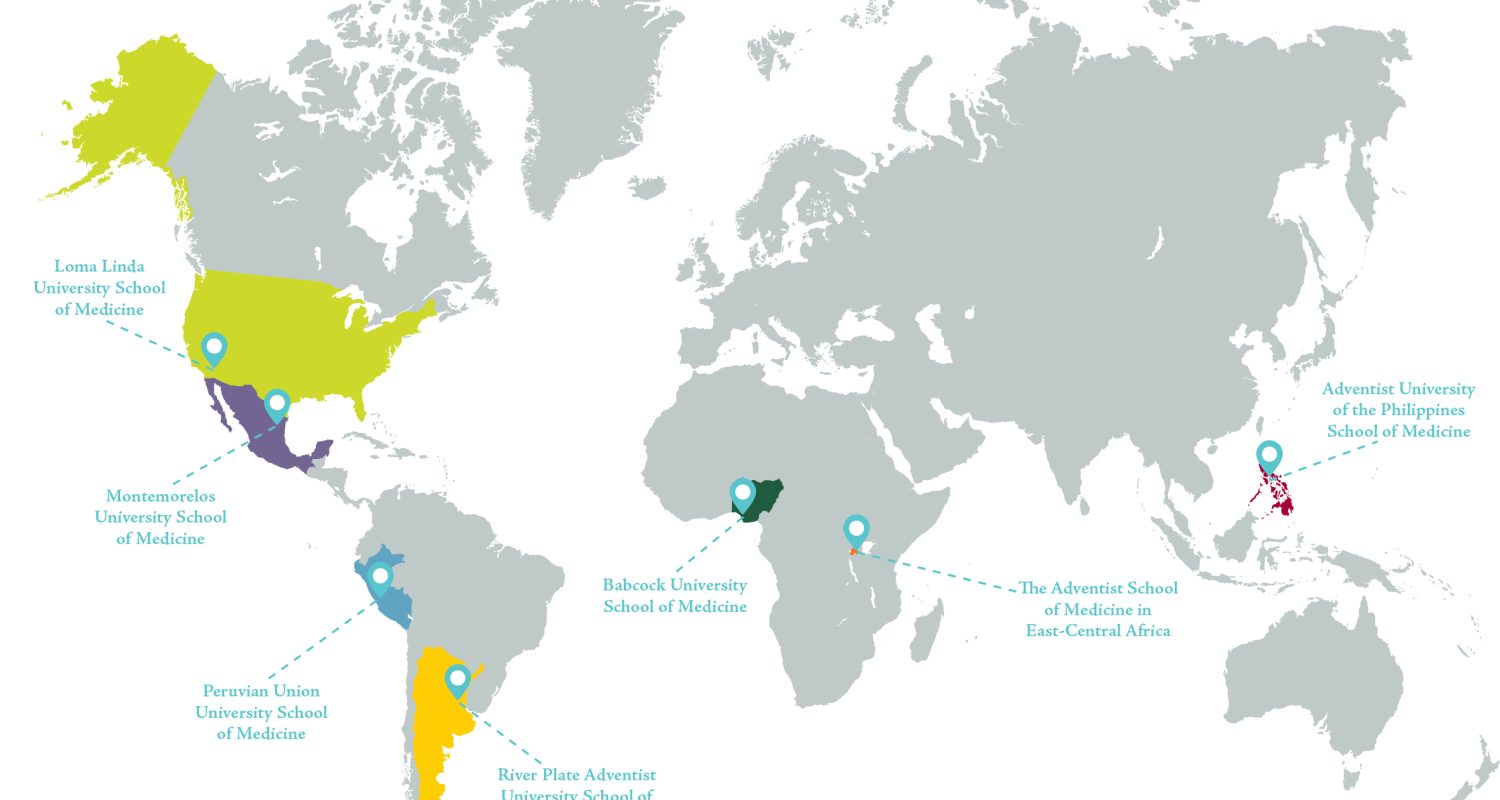
By Dwight C. Evans ’73-B
For the past 46 years Loma Linda University School of Medicine (LLUSM) alumni and faculty have assisted in the development of six new Seventh-day Adventist schools of medicine. Thanks to the dedication and collaboration of medical education leaders around the world, schools from Africa to the Philippines are teaching medicine through the lens of Adventism.
Many of these schools follow a six-year European model (six years including a “pre-graduate” internship often followed by one year of “social service” for the government prior to any graduate applying for residency training) with students matriculating after higher secondary school education.
Starting in the early 1990s, an ad hoc feasibility review by the Adventist Accrediting Association (AAA) (or its precursor) reviewed all applications to develop and start new medical schools. In 2010, the General Conference (GC) education department along with the GC health ministries department (in consultation with numerous global health-related consultants) instituted more formal accreditation guidelines for establishing new schools of medicine. The guidelines were extensively updated in the spring of 2021 in response to lessons learned in their application. Babcock University and Peruvian Union University were the first to go through a broad-based, formal process to obtain AAA permission to begin a new school; full accreditation is the final step. Recently, provisional approval has been achieved by the Adventist School of Medicine in East-Central Africa at the Adventist University of Central Africa.
The following material shares an overview of the development of Seventh-day Adventist medical schools around the world.
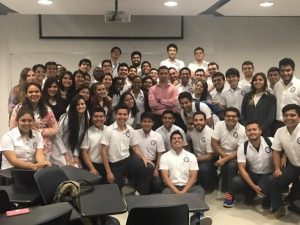
Montemorelos University School of Medicine
For many years there was interest in starting a school of medicine at Mexico’s senior college. When Montemorelos University in Montemorelos, Nuevo Leon, Mexico, received its university charter in 1973, extensive planning by a joint LLU and GC health department ad hoc feasibility team resulted in the opening of the Montemorelos University School of Medicine (MUSM) in September 1975 with a health sciences classroom/laboratory building. MUSM is governed by the Inter-American Division (IAD) and serves as the IAD’s school of medicine. In 1981, a German charity organization, Christoffel Blindin Mission, provided initial funding for a new community teaching hospital.
LLUSM alumni including Howard C. Smith ’32, Naomi E. Pitman ’36, Jess C. Holm ’52, Richard H. ’73-B and Kathlene B. Guth ’73-B, Dwight C. Evans ’73-B, and Russell E. Youngberg ’49 served in the first decade of MUSM, and Zeno L. Charles-Marcel ’80-aff served for many years as the dean.
MUSM’s community hospital provides outpatient experience for its students while most of their inpatient rotations are done in the highly regarded Muguerza Hospital System in nearby Monterrey. MUSM’s teaching hospital includes a major ophthalmology institute with a flourishing residency program.
Nahum Garcia, MD, is the director for health sciences and the medical school dean is Christian Aguilar, MD. The founding dean was Adelina Rocco, MD, and Kepler Hernandez, MD, and Ricardo Chavez, MD, were long-standing deans.
MUSM is accredited by the Mexican Council for the Accreditation of Medical Education (Consejo Mexicana para la Accreditacion de la Education Medica), and it is the first school of medicine in Latin America to incorporate lifestyle medicine throughout its curriculum.
Over the past 45 years, MUSM students have come from over 40 different countries. Currently, 34 countries are represented by its student body. The school has graduated 1,735 students now working in 61 countries, including Manuel Wong, MD, who recently performed the first bilateral lung transplant in Mexico for a COVID-19 patient.
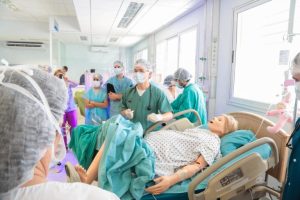
River Plate Adventist University School of Medicine
River Plate Adventist University (UAP) in Libertador San Martin, Entre Rios, Argentina, is the oldest Adventist higher education institution in South America. In the early 1990s, UAP began working on establishing a school of medicine with their core faculty coming from the oldest Adventist hospital in South America: River Plate Sanitarium and Hospital. The UAP request initiated a nascent AAA school of medicine feasibility team chaired by Albert S. Whiting ’58 of the GC health department that included John E. Peterson ’39, Edwin E. Vyhmeister ’63-aff, and Dwight C. Evans ’73-B together with South American physicians that met in 1992. Despite the forebodings of the South American Division leadership (concern about financial viability), under the guiding charismatic vision of Pedro Tabuenca, MD, the UAP School of Medicine (UAPSM) started in 1994 as a post higher-secondary six-year curriculum and recently celebrated its 25th anniversary.
UAPSM has a modern classroom/lab building with an extensive modern simulation center. UAPSM students complete clinical rotations in the River Plate Sanitarium and Hospital as well as in local regional government hospitals and clinics. UAPSM is highly involved in its “Mission Institute” with graduates now serving in several different countries.
UAPSM is accredited by the National Association of Medical Schools in Argentina. Its students have come from 51 countries, and the school has graduated 996 students. The current dean is Milton Mesa, MD.
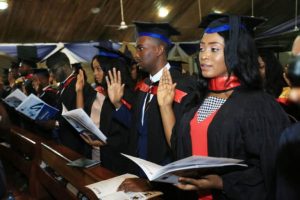
Babcock University School of Medicine
Babcock University in Ilsan-Remo, Ogun State, Nigeria, known as the Benjamin S. Carson College of Health and Medical Sciences, started its school of medicine in 2012 and graduated its first class in 2016.
Babcock University School of Medicine (BUSM) is a post-baccalaureate, four-year, university level program and its graduates use the Bachelor of Medicine, Bachelor of Surgery (MBBS) title. There have been 204 graduates (2016–2020). BUSM has an on-campus teaching hospital and also incorporates rotations for its students in regional government hospitals.
BUSM is accredited by the Nigerian National Universities Commission and the Medical and Dental Council of Nigeria. It claims a diverse student body with students from Nigeria, Cote d’Ivoire, Cameroon, Liberia, Sierra Leon, and Bangladesh. The school has graduated five classes totaling 204 graduates. The founding dean of BUSM was I. Okoro, MBBS; the current dean is B. M. Mandong, MBBS.
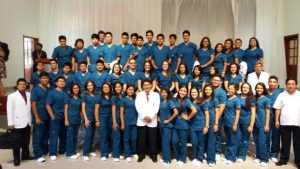
Peruvian Union University School of Medicine
Peruvian Union University (UPeU) School of Medicine, a joint operation of the North and South Peruvian Unions, initiated its first class in 2012.
Carlos Balarezo ’01-fac was the founding dean and led the initial infrastructure development of the classroom pavilion and the anatomy and microbiology labs. From 2015 through 2019, dean Roger Albornoz, MD, consolidated the school of medicine’s growth with the development of a mock operating room where students learned how to facilitate patient safety during procedures. UPeU’s clinical training is done largely at the Good Hope Clinic Hospital in Lima, with shorter clinical rotations at Ana Stahl Adventist Clinic in Iquitos, and the American Clinic in Juliaca. In addition, they have agreements with local Social Security hospitals. In 2018, the UPeU School of Medicine initiated one of the most modern and best equipped simulation centers in Peru. Luis Segura, MD has served as dean since 2020.
UPeU graduated their first medical students in 2018. The results of the annual Peruvian national residency exam showed that as a whole UPeU’s medical graduates are among the top ten schools in Peru, with one of their 2020 graduates earning fourth place among all graduates. The UPeU School of Medicine is accredited by the Superintendencia Nacional de Educacion Superior Universitaria de Peru and is listed in the World Directory of Medical Schools.
UPeU School of Medicine students have come from eleven countries. Seventy of these students came from outside Peru, mainly in South America. Annually, there are approximately eight applicants for every one that is accepted. The UPeU School of Medicine has graduated three classes totaling 103 graduates.
Daniel W. Giang ’83 has been an ongoing advisor for UPeU, from the initial steps of approval to full AAA accreditation.
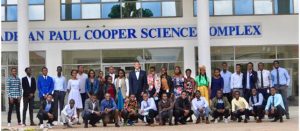
The Adventist School of Medicine in East-Central Africa
Plans for a medical school in East-Central Africa have been in motion for years; after overcoming many roadblocks and many site visits, it was decided to locate the new school of medicine in Kigali, Rwanda, at the Adventist University of Central Africa (AUCA). After long negotiations with the Ministry of Education, AUCA was eventually granted legal authority in 2019. The Adventist School of Medicine in East-Central Africa (ASOME) core building was inaugurated on Sep. 2, 2019, by the president of Rwanda and the president of the GC. Despite several COVID-19 lockdowns, the Rwandan Ministry of Education’s accreditation team finally approved full accreditation.
ASOME is a post higher secondary, six-and-a-half-year school of medicine that grants dual MD/MPH degrees. In addition, graduates receive both ultrasound and leadership certificates and ACLS/ATLS competencies. On March 10, 2021, the school started classes with 36 students coming from Rwanda, Uganda, Democratic Republic of Congo, Kenya, Ethiopia, South Sudan, South Africa, Cameroon, and Liberia.
ASOME has higher education accreditation through the Rwanda Medical and Dental Council. Eustace Penniecook, MD, is the founding dean of ASOME. LLUSM alumni that have assisted in the school’s founding include Daniel W. Giang ’83, Inzune K. Hwang ’95, and Zeno L. Charles-Marcel ’80-aff.
 CAMEL: The Consortium of Adventist Medical Education Leaders
CAMEL: The Consortium of Adventist Medical Education Leaders
As a result of many site visits on behalf of the Health Professional Subcommittee of the Adventist Accrediting Association, in 2016 Daniel W. Giang ’83 initiated a meeting of the leaders of the then six medical schools that grew into the Consortium of Adventist Medical Education Leaders (CAMEL).
CAMEL meets at least every two years, usually in Loma Linda, to network on ideas and concepts foundational to Adventist medical education. Recently, CAMEL has broadened its scope to include dental and pharmacy education leaders. As a forum to discuss and advise the leadership of the seven Adventist schools of medicine, CAMEL has become a very effective council to provide updates for continued accreditation and guidelines for new schools of medicine, dentistry, and pharmacy, as well as giving a community of committed health professional leaders a forum to exchange ideas and new practices in the education of health professionals.

Dr. Evans is an associate professor of medicine and enjoys coaching and mentoring Quality Improvement for Adventist Health International and the General Conference health ministries department. He enjoys travel, reading history and biographies, and being the father of three great children.

